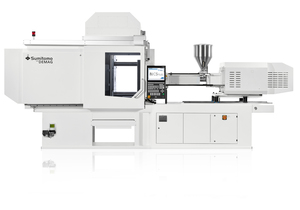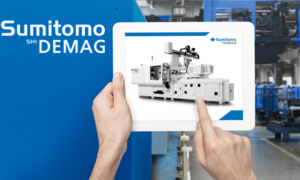
 |
Charlotte Stonestreet
Managing Editor |
| Home> | MACHINE BUILDING & ENGINEERING | >3D Printing & Prototyping | >Can machine learning make it in medical? |
| Home> | IIot & Smart Technology | >Big Data | >Can machine learning make it in medical? |
| Home> | IIot & Smart Technology | >Industry 4.0 | >Can machine learning make it in medical? |
Can machine learning make it in medical?
28 July 2025
IN A highly litigated and tightly regulated industry like medical device manufacturing, where processes demand strict validation, is full integration of machine learning into production truly feasible?

Generative AI, and by extension machine learning (ML), offers manufacturers the promise to predict and react autonomously to a wide range of production situations. But if an automatic adaption involves algorithmic changes to a validated process, does it risk undermining or even invalidating the fully tested and authorised production process?
Despite numerous advances in AI and ML, valid concerns relating to safety, transparency, explainability, trust, security, data privacy, interoperability, ethical biases and accountability persist. Several specialists from Sumitomo (SHI) Demag expand on where AI and ML can be usefully applied and why, for process validations in particular, there is still much deep learning to be done.
In medical manufacturing especially, robust validation protocols are critical throughout the product lifecycle, including any changes that could impact a product’s quality. There is no wiggle room – zero defects is always the target. Processors cannot simply shift the parameters to suit. When manufacturing a medical device or a sterile implant, nothing less than 100% quality is acceptable.
In accordance with ISO 13485 standards, ongoing documentation of the validated injection moulding process needs to be maintained. It is a continuous and scientific process. When machine settings are adjusted to compensate for changes in the environment or to address moulding issues e.g. pulling, distortion, or aesthetic defects, it will trigger a re-validation exercise. So too would major repairs, changes, or improvements to the mould tool and machine. The cost and time implications each time a moulder repeats this validation process can be extensive.
Side effects of machine learning
Medical business development director Andreas Montag expands: “One of the biggest obstacles to ML in medical manufacturing remains the altering of processing parameters. This is currently referred to as Black Box ML. If the processing algorithm is changed autonomously and it isn’t clear how a machine arrived at this decision, who is held accountable? Although the risk might be minimal, failure to detect any processing errors may cause harm to end users, resulting in a legal investigation.”
Altering a validated process using ML is still a long way off suggests the company’s UK and Ireland managing director Dave Raine. “Clear and practical regulations for this type of automated validation, while ensuring medical processes and products continue to meet regulatory and quality standards, do not yet exist. The EU and the FDA is continuing to work on classifications. This could take several years or more to materialise. For medical especially, with its entrenchment in risk mitigation, there is likely to be continued resistance to the adoption of ML automatically adjusting processing parameters.”
That being said, for many manufacturing markets, including consumer or packaging, where the focus is on high volume inputs and outputs, the opportunities for reactive autonomous ML are much more extensive. Here, projects have already been undertaken by Sumitomo (SHI) Demag in collaboration with industry partners and academics to calculate the optimal process settings on an IntElect manufacturing cell.
One pre-study project proved that the use of automated processing parameters on a non-medical application resulted in 4.5 times faster machine set up times and generated 78 percent less start-up waste.
Transferrable technologies
The development of activeMeltControl is another example of how adaptive technology is being applied by the company. Integrated into the machine control system, aMC works by continuously monitoring for variations in holding pressure and changeover position. Once a parameter is detected as drifting towards the tolerance limits set by the user, aMC automatically adjusts the set parameters to compensate for the variation. “This is a superb example of how AI can solve a particular processing challenge,” notes Dave. However, even here some human intervention is required as the adjustment bandwidth still needs to be defined by the processor.
Montag also notes that AI has accelerated the development of customised medical production cells through more accurate simulations and generative design. AI models and digital twins can help medical processors test concepts before machine builds and installations.
“There will always be nuances in every line and every customer production environment. Rather than starting from scratch with each moulding cell, Sumitomo (SHI) Demag draws on our industry expertise and leverages AI to more accurately simulate and predict machine interactions. This ultimately supports design optimisation, accelerates development, factory testing and installation, helps minimise risk and reduce bespoke R&D costs. For time-critical projects, this insight and added context can be invaluable for customers,” explains Montag.
AI can also assist with ensuring any URS design requests are both feasible and warranted. This can include adapting tried and tested documentation blueprints to assist customers with scoping out their URS, artwork design, software and functional specifications, ensuring costs and budgets are carefully controlled. Although the sharing of these processes can assist the wider medical community, no secure intel or intellectual property is ever transferred between clients, assures Montag.
The initial URS phase is critical, as medical customers rely on it to validate that the injection moulding machine is equipped as specified in the preliminary stage and performs as expected. “There has been much progress in this area too. Machine qualification files, which were once heavy paper documents, are being transferred to digital. Many of these have transportable sections, which can be tailored to each medical application a machine is being commissioned for, without compromising sensitive information,” adds Kris Thacker, the company’s medical technical specialist in Ireland.
Additionally, for AI to truly imitate human behaviour, deducing why and how much its changes impact process stability, it needs complete connectivity between all machinery assets. This requires a single data source. Here, interoperability and connectivity between different technologies is a critical stepping stone that enables complex interactions between part quality and machine process parameters, as well as other fluctuating and influential factors, such as cooling, temperature and de-moulding.
Rather than focusing on the current limitations of machine learning, the Sumitomo (SHI) Demag team prefers to utilise its more creative and enabling qualities.
Montag concludes: “For medical moulders, AI and ML extends way beyond automating changes to prescribed processing parameters. There are many excellent examples of how it drives product development, accelerates decision making, supports scalability and is a catalyst for further process improvements. The disruptions to traditional models, including validated processes, will come. We shouldn’t view this as an existential threat, but an opportunity that assists processors in all sectors with continuous improvement.”
- Expanded Pioneer Safety Group appoints MD
- SME manufacturers cut emissions
- HIGH FLYING AUTOMATION
- Where innovation meets industry
- Sellafield launches robot challenges
- New UK Government Minister for Scotland visits Edinburgh robotics centre
- Single- or multi-supplier philosophy?
- Fast fashion, faster robotics
- Starting made simple
- The right chemistry




















